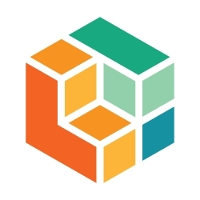For some clients, user research seems like a “nice-to-have” component of their projects. It’s great if we have the time and money, but if not, it’s redlined out of the project plan. But hold on a second - being user-centric throughout a project’s lifecycle can provide significant cost savings. Not only that, but the increase in customer satisfaction and productivity improves dramatically as well.
How exactly does user research not only keep a project on time and budget - but also save on both?
1. End-Goal Focused: Keeping a client’s product on target
Business goals don’t necessarily match customer needs – and companies may not always understand their end users – so gathering user feedback is critical. Why build a car when you only need a bike? We’ve seen projects go off the rails because clients insisted on skipping upfront research. As a result, what started as a backyard tree house (or small customization to an enterprise software) turned into a four-bedroom house and a two car garage (custom app), when all the user really needed was a tent (minor bug fix). We’ve also been in situations where we’ve user-tested products after they were designed, built, and deployed, only to have prospective users not understand or even know how to navigate the product. “Thanks for the thingamajig, but what I really needed was a can opener….” The common theme: A lot of wasted money and time.
2. Measure Twice, Cut Once: Less development work… and rework
When the end-goal of a product or project is well defined, it gets built faster and better. Why? It’s well designed and planned, eliminating a lot of the “what if’s” (“what if we add this feature?” “what if the user needs more options?” “what if we tried a different approach?”) If a product has been designed with user research at the center, you’ll save on developer time and money.
But don’t stop with one user research activity; we’ve found that gathering user feedback throughout the whole design process is essential. Vet wireframes with users, walk through features and information architecture, find all the gray areas and illuminate them, so that once wireframes are finalized development has a solid blueprint to build from -- once.
This iterative approach works with an agile environment: each sprint includes features validated by users before development begins. The process of design-validate-build is repeated in every sprint that requires it, so that anything we build has received user feedback.
3. Efficiency: Productivity for All Stakeholders
Besides the cost savings directly associated with incorporating user research, clients may realize productivity gains on their end. Designing an intuitive product means support tasks (training, sales and service calls) can be reduced.
A user-centric approach doesn’t just benefit users – everyone involved with the product benefits. While incorporating user research can save time and money by preventing mistakes, the best part is that user research costs relatively little.
A small investment for a lot of savings - that’s not something to take lightly.
